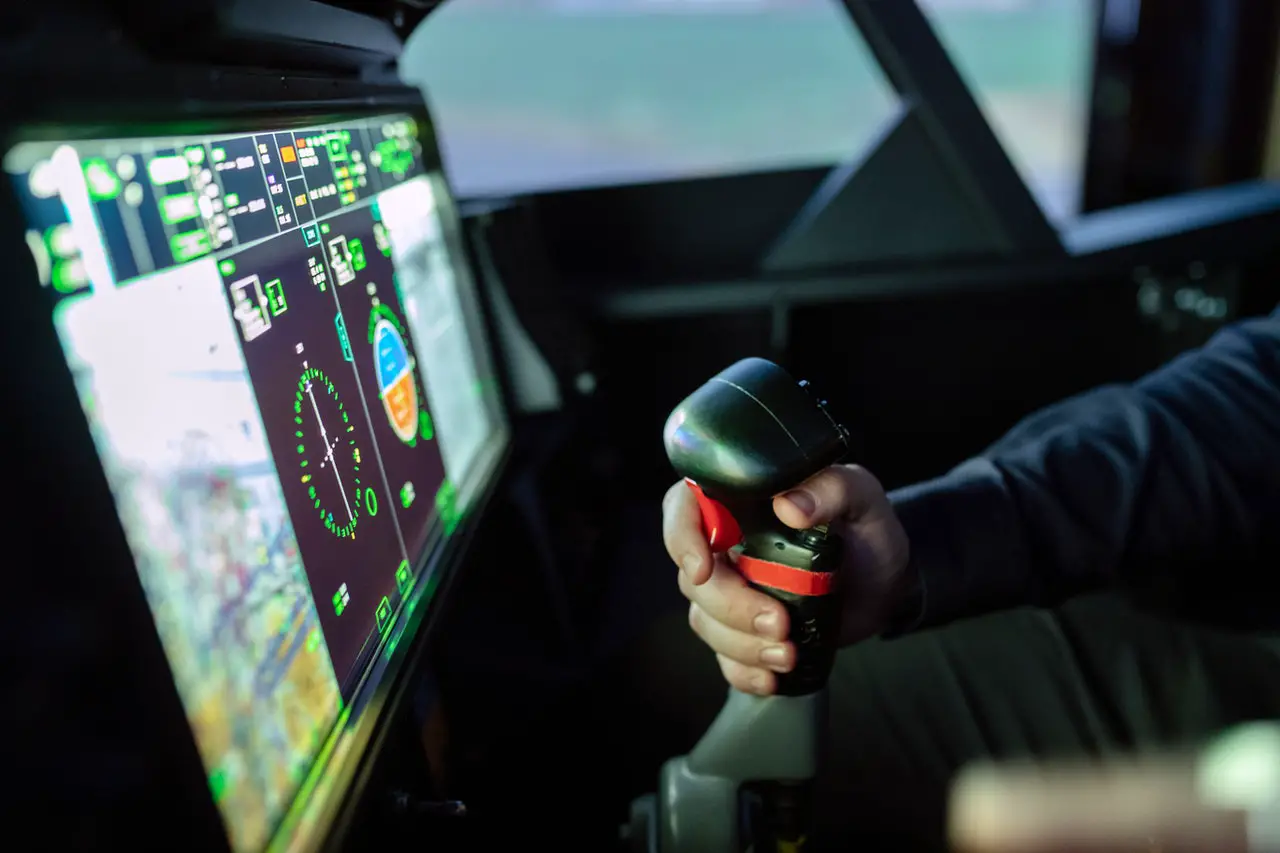With a new set of motion-based virtual reality flight simulators, Auburn University has become the foremost academic institution to set up this cutting-edge technology for research.
The VR simulators have been set up in aerospace engineering’s Extended Reality Flight Simulation and Control Lab under the supervision of Assistant Professor Umberto Saetti. The simulators can replicate multiple forms of rotorcraft and fixed-wing aircraft. Researchers will use them to run immersive simulations using extended reality to evaluate the human-machine interaction, flight control laws, and pilot cueing methods.
“To my best knowledge, very few academic institutions have the capability of one single motion-base simulator that can be used for rotorcraft, general aviation, and fighter jet simulations. At the same time, probably even less, if any, institutions have two of them,” said Saetti.
The two simulators will enable the researchers to simulate multi-pilot and multi-aircraft scenarios, such as refueling in mid-air or even air-to-air combat.
The University has sourced the units from Brunner Elektronik, a leader in virtual-reality flight simulation. They will enable Saetti and other aerospace engineering professors to take their research further than before. Moreover, future aerospace engineering students can now explore rotorcraft flight dynamics and develop and test their own flight control systems.
The simulators come with haptic feedback suits, called TESLASUITs, providing pilots with important information, such as peer aircraft location, landing zone locations, and rotorcraft noise, through feedback on their body.
Saetti explained that the suits and simulators would also be used to understand helicopter flight control systems when landing on ships. This is in reference to his current, award-winning study, “Linearized High-Fidelity Aeromechanics for Extended Reality Simulation and Control of Shipboard Interactions.”
“This equipment gives us the opportunity to provide potential partners like the U.S. Army or U.S. Navy with an unprecedented way of conducting simulations, but it also allows us to investigate new means of conducting flight simulation itself. We look forward to this new world of flight simulation and the endless research opportunities it brings,” added Saetti.
Follow us on LinkedIn
Read other Articles





